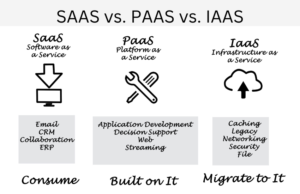Software projects fail every day, costing businesses billions of dollars and countless hours of wasted effort. The Standish Group reports that only 16.2% of software development projects are completed on time and within budget. In most instances, the cost of software is much higher than expected.
Software development goes fast. According to research, 2/3 of development projects fail because of poor quality. Developing software takes considerable time and effort, so teams should plan to invest much time and resources in the project.
55% of projects fail due to a poor understanding of business goals. If stakeholders do not have a thorough grasp of the business problem that needs to be solved, they will find it difficult to develop an appropriate software solution.
Here are the probably key reasons for the failure of a software development process, and also discuss tips to avoid them.
13 Reasons for Software Development Project Failure
1. Lack of Planning
The number one reason for software project failure is the fact that the teams involved in the process do not consider or do not prepare a proper plan. This lack of planning approach will lead to many problems. One is that team members do not plan for the necessary resources, tools, timelines, and procedures required for the project.
2. Lack of Regular Communication
Another reason why software solutions fail is that team members are not communicating with each other. Poor communication is misconstrued and leads team members to believe that someone is saying something when in reality, no one is saying anything. Occasionally, team members believe that they are communicating with one another in an unnoticed and error-prone manner. Regardless of the reason, communication is a major issue when it comes to projects.
3. Lack of Organization and Team Structure
Another key contributor to a project’s failure is the inability of the development team to carry out their duties effectively. This is because of multiple reasons but the main reason is not a properly organized and structured team.
This can be attributed to the gap in communication and the planning that was done. They may not have been able to complete their duties due to ineffective communication or planning.
4. Lack of Executive Attention
Many software project failures occur due to a lack of executive attention. When tech leaders fail to provide the necessary oversight the project can run into serious trouble. Executives need to be involved in even the smallest aspects of the development process to ensure proper management, development, and delivery.
5. Underestimation of Project Scope and Complexity
When a project is not properly estimated, it can result in serious trouble. Many projects fail because they fail to account for all of the necessary steps, and project managers are often left scrambling to catch up with their schedules. It is important to perform a realistic budget estimation and ensure that the project team has clear expectations.
6. Project Scope Changes
When you’re working on a new software project, it’s important to focus on the business goals and be sure that the project Scope statement is clear and concise. The project Scope statement allows all of the project team members to stay on track and achieve success. Unfortunately, the project Scope statement may change as the software development progresses. When this happens, the project may lose focus and direction. This can result in a failure to meet the project’s goals and can ultimately lead to its early termination.
7. Unrealistic Expectations based on the Unclear Requirements
Unrealistic expectations are mostly based on unclear requirements that will lead to failure. It’s critical to understand the difference between realistic and ideal expectations and requirements. Realistic expectations are based on facts, whereas ideal expectations are based on hopes and dreams.
For example, if you set a deadline of three months to complete a task, you’re setting unrealistically high expectations. On the other hand, if you set a goal of completing a task within two weeks, you’re establishing realistic expectations.
It’s also important to recognize that no one person has all the answers. Therefore, it’s imperative to involve multiple stakeholders throughout the development process.
8. Poorly defined Roles and Responsibilities
Uncertainty regarding roles and responsibilities can make it difficult for teams to achieve project goals and complete them on time. Project teams need clearly defined boundaries between them, and they need to know what actions and decisions they can make.
9. Lack of Documentation
Failing to document every aspect of a project means that future developers won’t be able to understand what happened during a project’s development. This can make it extremely difficult to troubleshoot issues as they arise, and it can often lead to wasted time and resources.
10. Insufficient Testing
Testing is an essential part of software development. If testing is not performed correctly, it will eat up valuable time.
The software will always contain bugs, but the more serious errors you can eliminate, the better the outcome for your project. As a result, Quality Assurance (QA) becomes an extremely important part of the process.
Test your software under as many extreme conditions as possible by introducing data that mimics the more extreme conditions you will encounter in production.
11. Inadequate Project Management
Project managers or Tech leaders need to effectively delegate roles and responsibilities, supervise work, and monitor the performance of their team. Failing to do so can drastically increase a project’s timeline and cause major headaches.
12. Using an Unsuitable Technology Stack
It can be difficult to build a solution that is competitive in the market if you use outdated tools or the wrong technology stack that are not a good match. It can lead to falling behind the target deadline and significant delays.
13. Lack of Commitment
Software development process requires a team effort. If the tech team doesn’t have a strong level of commitment, they may fail to communicate well, which can result in the project failing. Making changes or fixing errors can be frustrating and time-consuming. Uncommitted team members may not make an effort to complete the necessary tasks.
Steps You Can Take to Prevent Your Software Development Project from Failure
There are a number of ways to help prevent your software development project from failure, including establishing communication protocols, planning for contingencies, and establishing a clear organizational structure.
One of the most common reasons for failure is that they weren’t planned well from the beginning. A software project has a series of interrelated steps, and if they aren’t planned well, the project will take longer to complete and cost more. Planning is a critical component of any project, and if you aren’t careful, it can spell trouble for the project.
1. Take Time to Plan, and Define the Scope and Goals of the Project
Every successful software development project has strong planning behind it. Before you start any work, you first need to identify the scope and goals. It’s important to know the scope of the project, otherwise, you won’t know if the project is feasible. You should use a good project management strategy. It is important to define the project objectives and goals so that the team knows what they need to build, how they need to develop when they need to complete, and what the final product will be.
2. Determine the Technical Requirements and Available Resources
A project manager needs to determine all of the technical requirements for the project. For instance, you need to know how many users will use the project and what devices they will use. You will also want to determine how much bandwidth and storage the project will need and also must consider the available resources, dependencies, milestones, and risks. This information will help you plan the project effectively.
3. A Clear Organizational and Teams Structure
The organizational and team structure of any project can have a significant impact on its success or failure. Whether you’re planning a large or a smaller one, designating specific roles and responsibilities will help ensure the project runs smoothly and efficiently.
4. Define Realistic Deadlines and Timelines
After proper planning, a project manager can predict the deliverables’ dates. After you have estimated the project, the next step is to create a schedule. Set realistic timelines or deadlines so that everyone knows how much time they have to complete their assigned task, but unrealistic timelines may lead to failure to complete the project on time also, tight and short deadlines may lead your team into a depressed and frustrated situation.
5. Create Issue Logs
You will likely run into a few issues as you work on the project. It is crucial to identify and log these issues in a project log. The issues log can be used to keep track of the issues you have encountered and how they were resolved.
6. Establish Communication Protocols
Communication is key to any successful project, so establishing a precise communication method with your team and other project stakeholders is vital. Communication protocols help ensure that everyone is on the same page and that everyone has the information they need.
7. Planning for Contingencies
No matter how well you think you have planned, it’s impossible to predict every contingency that will arise during a project. Developing contingency plans for unexpected situations can mitigate the effects of any unforeseen issues that may arise.
8. Review and Implement Robust Testing
After completing your project, you should perform a thorough testing process to ensure that everything is working properly. This includes verifying that all of the features are working correctly and that there are no errors in the code. If any problems arise during testing, they can be corrected before the final version is released.
What Will Be the Consequences of a Software Project Failure You May Face?
A software project failure can have many consequences. These failures can come in different types and forms, and some of them can lead to serious consequences.
Loss of Capital
By failing to complete enough work to prove the value of the project, you lose the value of the capital invested and are unable to claim the profits that would have been earned.
Failure of Business Objectives
By failing to meet your requirements in the software, you can fail to meet your business’s objectives.
Negative PR
By failing to meet your deadlines, you can fail to meet your customer’s expectations. This can result in negative PR for you and your company.
Loss of Reputation
When you fail to deliver software that meets your requirements, you can lose your reputation.
Loss of Customers
By failing to deliver software that meets your requirements, you can lose customers.
Wrapping Up
When you work on software projects, they face a number of challenges. Sometimes, these challenges stem from external factors and can be easily managed. In some cases, however, these challenges are caused by internal factors, such as a lack of quality, poor communication, inadequate testing, lack of technical expertise, and an insufficient budget, which can have a much greater impact on the project.
A big list of features doesn’t guarantee software project success and will fit the defined requirements very well. Several requirements might not be met, or even worse, the requirements can change during the development phase. The requirements specification needs to be in specific and measurable terms, such as “The system shall allow the user to register new users.”
Don’t fall in love with your software. Consider the possibility of changing requirements as new features might be added. Each requirement should include details (such as business rules) in order to make sure that the software will perform the task correctly.
Also, you should not try to fit everything into one system. Don’t assume that the system will fulfill all your requirements. It might be good to make the system more flexible than initially planned, but it shouldn’t deviate too much. You might end up fixing issues later, which will impact delivery costs.
There Are Several Reasons Why Software Projects Fail, but the Easiest Way to Avoid Them Is to Do Your Due Diligence
1. Develop an effective software project plan.
2. Establish a clear project scope.
3. Develop a solid, realistic budget.
4. Design a solid software architecture.
5. Create clear, concise software requirements.
Looking for the Expert Team for Your Development?
Are you looking for a development team for your Software development project? connect with our robust development team to build your envisioned project.
Also, Read This: When To Use Agile Vs. Waterfall Project Management Methodology For Your Project






